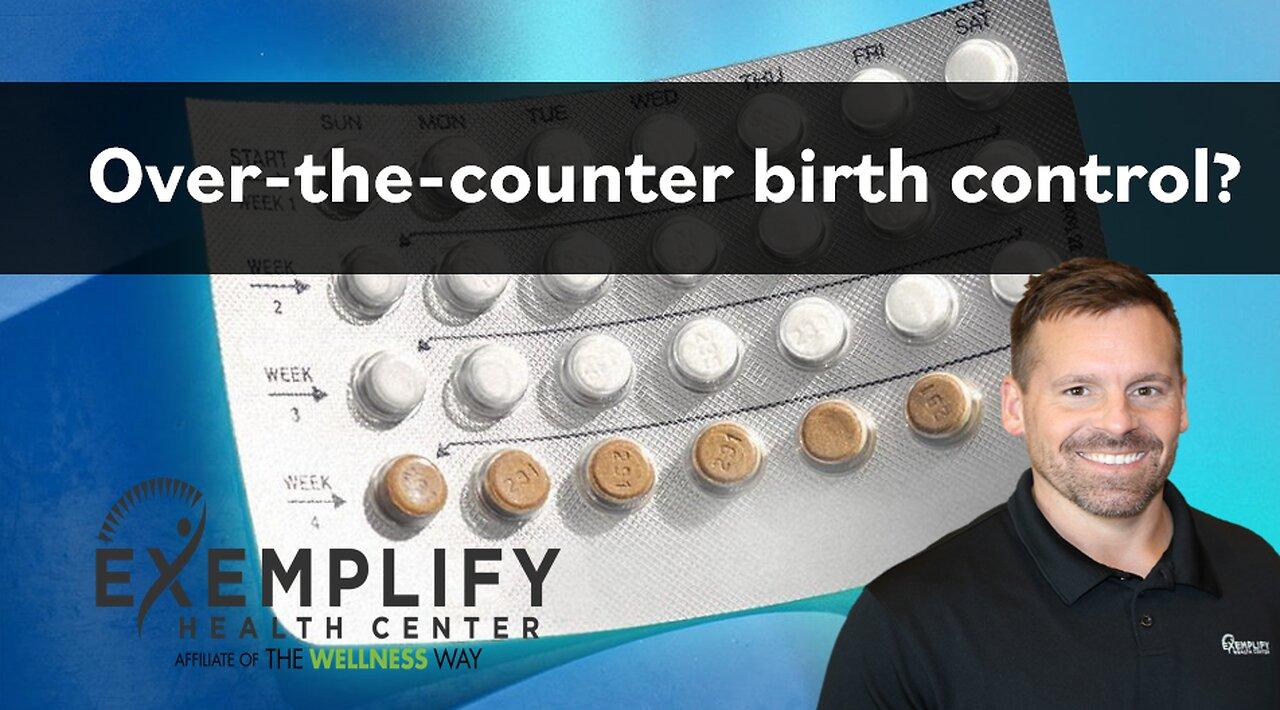The Post-Roe Landscape: Examining The Role Of Over-the-Counter Birth Control

Table of Contents
Increased Demand and Accessibility of Over-the-Counter Birth Control
The reduced availability of abortion has undeniably led to a surge in demand for reliable contraceptive methods. This increased demand highlights the critical need for broader access to affordable and effective over-the-counter birth control options.
The Impact of Restricted Abortion Access
The restrictions on abortion access are having a tangible impact across the country.
- States with stricter abortion laws are seeing a rise in telehealth appointments for birth control prescriptions. This highlights the increased need for convenient and accessible contraceptive options.
- Increased demand puts a strain on existing healthcare resources, making over-the-counter options even more vital to alleviate pressure on clinics and providers.
- The potential for increased unintended pregnancies underscores the importance of readily available birth control. Preventative measures are now more crucial than ever in safeguarding reproductive health.
Expanding Access through OTC Availability
Making birth control readily available over-the-counter eliminates several significant barriers to access:
- Removing prescription requirements could significantly increase contraceptive use among underserved populations. This includes low-income individuals and those in rural areas with limited access to healthcare providers.
- Increased accessibility could lead to lower rates of unintended pregnancies and abortions. This is a key public health goal in the post-Roe era.
- Discussions around expanding OTC birth control options often include debates about age restrictions and patient education. These are crucial considerations to ensure safe and responsible use.
Effectiveness and Types of Over-the-Counter Birth Control
Currently, some forms of birth control are available over-the-counter, but the range remains limited. Understanding the efficacy and limitations of these options is crucial.
Current OTC Options and Their Efficacy
The most common over-the-counter birth control methods are:
- Condoms provide both pregnancy prevention and protection against sexually transmitted infections (STIs). They remain a highly accessible and effective method when used correctly.
- Emergency contraceptive pills (Plan B) are effective if taken within a specific timeframe after unprotected sex. These are crucial in mitigating the risk of unintended pregnancy in emergency situations.
- The efficacy of different OTC options varies, and proper use is crucial for effectiveness. Consistent and correct use is essential for maximizing the effectiveness of any contraceptive method.
Potential for Expanding OTC Options
The future may see a significant expansion of OTC birth control, potentially including hormonal methods like certain types of pills. This requires careful consideration:
- Research and development of new contraceptive formulations are ongoing. Innovations in contraceptive technology could lead to more accessible and effective OTC options.
- Regulatory hurdles and potential safety concerns need careful consideration before expanding OTC access to hormonal birth control. Thorough testing and review are necessary to ensure safety and efficacy.
- Comprehensive patient education materials are essential for safe and effective use of all contraceptive methods. Clear and accessible information is crucial for responsible self-care.
Addressing Concerns and Potential Challenges
Expanding access to over-the-counter birth control also necessitates addressing potential challenges and concerns.
Concerns about Misinformation and Self-Medication
Increased access requires a parallel effort to combat misinformation:
- Addressing potential misuse through accurate information is crucial for responsible self-care. Public health campaigns can play a vital role in this regard.
- Reliable sources of information, such as healthcare providers and reputable websites, should be promoted. Directing individuals to trustworthy sources is crucial for accurate information.
- Clear and accessible instructions on packaging and patient education materials are essential. Easy-to-understand information is crucial for safe and effective use.
Equity and Access for Underserved Populations
Equitable access is paramount, addressing existing health disparities:
- Addressing financial barriers through subsidies and affordable options is critical. Cost should not be a barrier to accessing essential healthcare.
- Expanding access in underserved communities requires addressing geographical limitations and healthcare disparities. Solutions should be tailored to the specific needs of different communities.
- Promoting awareness and access in communities with limited healthcare resources is crucial. Outreach and education are key to ensuring equitable access.
Conclusion
The post-Roe era necessitates a renewed focus on preventative reproductive healthcare. Expanding access to over-the-counter birth control is a critical step towards ensuring reproductive autonomy and reducing unintended pregnancies. While concerns regarding misinformation and equitable access must be addressed, the potential benefits of increased availability of over-the-counter birth control are significant. By promoting responsible use, providing comprehensive education, and ensuring affordability, we can leverage the power of over-the-counter birth control to improve reproductive health outcomes for all. Learn more about available over-the-counter birth control options and how to access them safely and responsibly.

Featured Posts
-
 Working For The Wealthy The Untold Stories Of Chalet Staff In European Ski Resorts
Apr 24, 2025
Working For The Wealthy The Untold Stories Of Chalet Staff In European Ski Resorts
Apr 24, 2025 -
 Chinas Shift To Middle Eastern Lpg Replacing Us Imports Amid Tariffs
Apr 24, 2025
Chinas Shift To Middle Eastern Lpg Replacing Us Imports Amid Tariffs
Apr 24, 2025 -
 Recent Bitcoin Btc Gains A Deeper Look At Market Drivers
Apr 24, 2025
Recent Bitcoin Btc Gains A Deeper Look At Market Drivers
Apr 24, 2025 -
 Canadian Auto Industry Responds To Us Trade War With Five Point Action Plan
Apr 24, 2025
Canadian Auto Industry Responds To Us Trade War With Five Point Action Plan
Apr 24, 2025 -
 Tesla Q1 Profits Plunge Amid Musks Political Backlash
Apr 24, 2025
Tesla Q1 Profits Plunge Amid Musks Political Backlash
Apr 24, 2025
